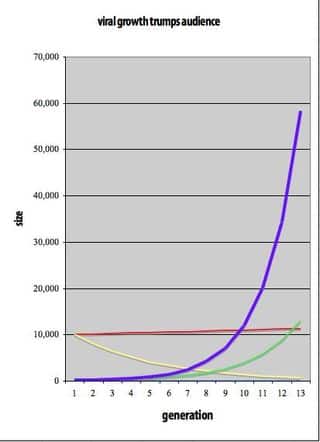A few months ago, when watching the news the night Osama Bin Laden was killed, the national news outlet I was viewing decided to pull up their Facebook Page on live TV to show what some of their viewers were saying about the big news.
Below is roughly how the exchange went…
“(News Anchor) Well, Amy Johnson says ‘God Bless America and God Bless our Troops’.“
(Keep in mind this is while they are showing their Facebook fan page live on screen)
Anchor searches for another politically correct viewer comment for a few seconds…
“And, Josh Hallowell says ‘The witch is DEAD’.”
(Again, keep in mind their Facebook page is live on the screen, the viewer can see exactly what he’s reading in addition to comments like ‘I hope all of his 72 virgins are men’, ‘Osama down, now off to find Waldo and Carmen San Diego!’, and some other vulgar commentary as well as cuss words.)
It seems that everyone is trying to plug their Facebook page lately. This is for obvious reasons. Despite recent changes to navigation within Facebook that have spurred user complaints, we’ve seen this story before and we’ll see the same result. People aren’t leaving…Facebook isn’t going away…and while Google + may disrupt Facebook or knock it slightly off course, it will not soon replace the behemoth.
Some have grown somewhat annoyed at corporation’s attempts to use Facebook to appear relevant. Increasingly, we hear across multiple news and media outlets and in television commercials, “Follow Us On Facebook!”
So, the question is, how do we successfully integrate Facebook into more comprehensive marketing and messaging plans for your business? We all understand the actual end goal … Increased exposure, additional opportunities for sponsorship/advertisers, etc. However, if you do not have something relevant or of value for the user to look at on your Facebook page, why promote it at all? This is the same content question that has plagued all marketers for 15+ years with the invention of the internet and websites.
Many brands and idea promoters want as many Facebook fans and Twitter followers as they possibly can, as soon as they can possibly get them. This is a repeated request we get from companies we work with, “How do we get more Facebook followers? We know we need to be doing social media, but we don’t know why or how.”
A lot of these fans and followers are not true followers. One thing to consider is how many of these fans and followers have hidden you in their news feeds. And, with recent Facebook changes, it may be even harder to market to an already existent pool of “followers”. Marketer Seth Godin calls these “Sunny Day Friends”. Users that “follow” in a fleeting moment of interest of attempt to take advantage of a one time offer. In an experiment Godin recently conducted on Facebook, 200,000 followers led to 25 clickthroughs. That’s a .01% CTR! Ouch!

Godin says, “If you start with 10,000 fans and have an idea that on average nets .8 new people per generation, that means that 10,000 people will pass it on to 8000 people, and then 6400 people, etc. That’s yellow on the graph. Pretty soon, it dies out.
On the other hand, if you start with 100 people (99% less!) and the idea is twice as good (1.5 net passalong) it doesn’t take long before you overtake the other plan (the green). That’s not even including the compounding of new people getting you people.
But wait! If your idea is just a little more viral, a 1.7 passalong, wow, huge results. Infinity, here we come. That’s the purple (of course.)”
His point? Better ideas lead to better social media campaigns. More followers does not equal success. Less followers that are more engaged are better than more followers that are less engaged.
An example of a good use of a Facebook page to promote consumer loyalty: Corporate PR. Sponsor a contest to donate money to vote for the best charity, and donate money to the winning charity. Proper use of Facebook? Yes, you are promoting a social cause and getting good PR from it, all while doing positive viral marketing that is likely to spread. (Good marketing rule of thumb, the more emotional and personal a campaign, the better!)
Example of a bad use of Facebook page to promote consumer loyalty: “Follow us on Facebook and Twitter”. We hear this often on traditional media, but often one goes to a company’s Facebook page and there is nothing there. Nothing interactive. No call to action. No strategy. Why should I follow you? What’s in it for me?
Like I said, Facebook has its place and purpose, but too often it is promoted in an attempt to appear relevant and even REPLACE other crucially important marketing and messaging channels. The number of followers or friends you have says nothing to the actual experience or quality of the content you are discussing.
As Seth Godin puts it, “a slightly better idea defeats a much bigger but disconnected user base every time.
The lesson: spend your time coming up with better ideas, not with more (faux) followers.”